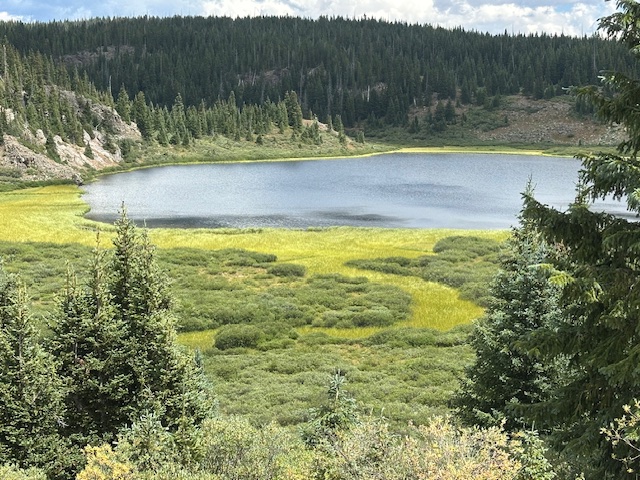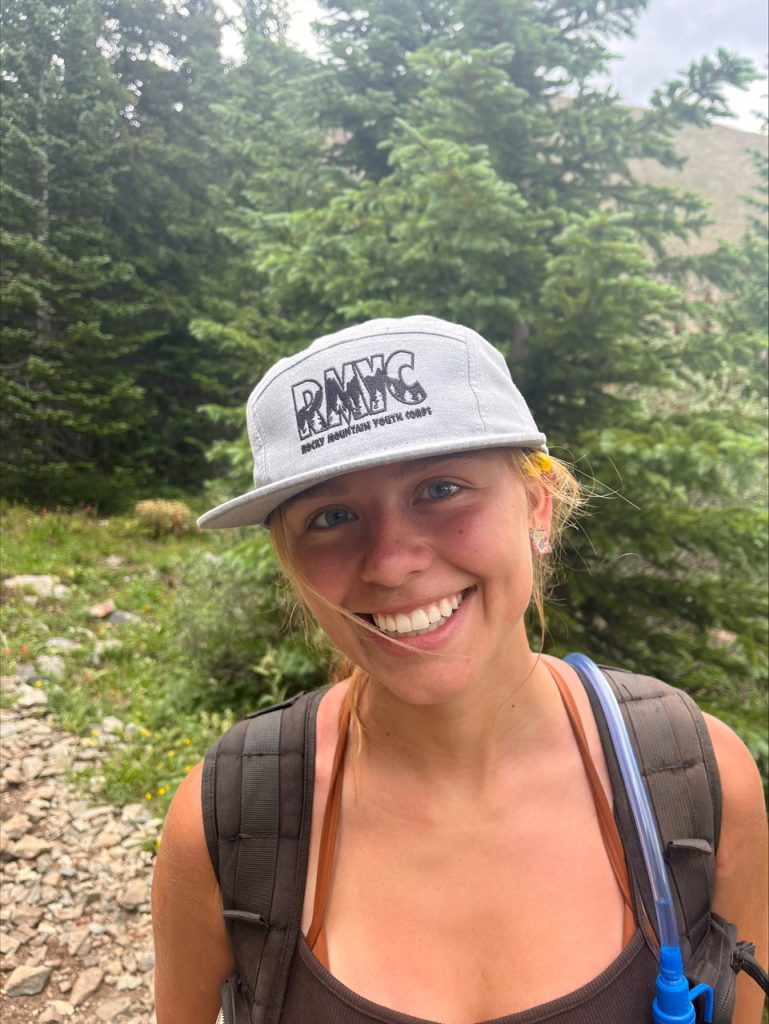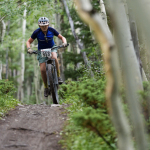Get Wild: Riparian zones — why the edges matter
Get Wild

Frances Hartogh/Courtesy photo
When I first started working trail, I assumed my projects would look like long hikes, Alpine views and sawing through logs blocking trails. I didn’t expect to be to be working right on the edge of a river, clearing willows while frogs scattered at my feet.
Our crew was assigned to a riparian rehabilitation project during the peak of a brutal July heatwave, with temperatures over 100 degrees every day. The air was thick with humidity, mosquitoes were relentless and the grey, dead trees were twisted and tangled, resisting every swipe of my saw. But the longer I spent by that river, the more I appreciated the work.
Riparian zones are the special in-between places where the land meets the water. Incredibly diverse, they provide nurseries for fish and amphibians, rest stops for migratory birds and essential services like water filtration and soil stabilization. These creek-sides play a crucial role in maintaining ecological balance, but they’re also incredibly fragile and easily damaged.
One of the ways we were tasked to help protect this precious ecosystem was by building riparian animal-habitat piles. I thought this would mean that we would be moving brush out of the way, stacking it somewhere to decompose. Instead, we learned how to cut and place logs and branches in intentional formations to support wildlife.
We built three different types of habitat piles, each designed for specific species. Some were low and dense, perfect for small mammals or amphibians looking for shade, cover or cool moisture during the hottest part of the day. Others were stacked near the water’s edge to create spots where animals could safely access the river without exposing themselves to predators.
The design was more strategic than I expected. We weren’t just tossing logs into a pile — we were placing them in ways that mimicked natural debris, similar to what you’d find after a tree falls in a storm. The piles had structure and spacing. We used larger logs to create the “bones” of the pile and filled in the gaps with branches and smaller brush to provide texture and insulation. Some had intentional air pockets, which allow airflow and give reptiles and amphibians space to move freely inside. Every material we cut had a specific role to play.
Creating these spaces felt a little like reverse landscaping — intentionally messy, but ecologically functional. And it challenged the idea I grew up with that nature has to be pristine or groomed. In reality, wildlife thrives in the messy corners: in deadwood, tangled brush, and damp piles that humans might otherwise try to clean up. What looks disorderly to us can be life-saving shelter to our favorite little critters.
Most of the animals these piles were meant to support were ones we didn’t see and probably never would. But the work still felt meaningful. Not because it was flashy or had a dramatic before and after, but because it was quiet, specific and necessary. Riparian zones are home to so many species whose needs often go overlooked, including frogs that need shaded water, birds that nest low to the ground and insects that rely on decomposing wood to complete their life cycles.
While creating these piles, we built microhabitats, giving smaller lifeforms a better chance for survival during a time when this ecosystem is facing increasing stress.
I came into this work thinking restoration would be about dramatic changes and visible results, but that week by the river taught me otherwise. Sometimes the most important work happens right under our noses, in the shaded, muddy, overlooked spaces where life just needs a little room to keep going.
Get Wild” publishes weekly in the Summit Daily News. Kyreland Nolan (Kiki) is a rising sophomore at Middlebury College, studying environmental chemistry and singing for her a capella group, “The Paradiddles.” She is currently working on the Disaster Relief Conservation crew for Rocky Mountain Youth Corps. Originally, she is from Wisconsin and lives with her two dogs, Maggie and Teddy.


Support Local Journalism

Support Local Journalism
As a Summit Daily News reader, you make our work possible.
Summit Daily is embarking on a multiyear project to digitize its archives going back to 1989 and make them available to the public in partnership with the Colorado Historic Newspapers Collection. The full project is expected to cost about $165,000. All donations made in 2023 will go directly toward this project.
Every contribution, no matter the size, will make a difference.









